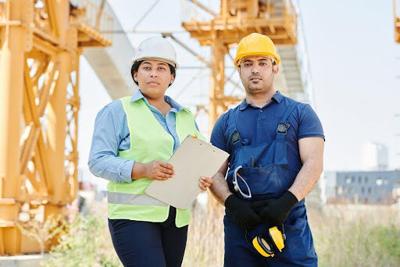
Have you ever wondered what keeps buildings standing, especially the towering skyscrapers? It's all about structural reinforcement. When we add extra strength to a building, it stands up to nature's forces better. Below, we'll take a closer look at how concrete plays a vital role in reinforcing buildings. Stick around, and you'll be a structural reinforcement whiz in no time!
Foundational Support Systems
A building's backbone is its foundational support system. This system is usually made of concrete. This is because concrete is tough and doesn't bend or break easily. This makes it perfect for strong buildings. When we pour concrete into a mold, it hardens and forms a solid base. This base, or foundation, holds up the rest of the building. A reinforced building often uses more concrete in its foundations for added strength.
Steel Frames and Beams
If the foundation is the backbone, then steel frames and beams are the skeleton of a building. They create a cage-like structure inside the building. This "skeleton" gives shape and support to the building. Steel is robust and can handle extreme weight and stress, making it a go-to choice.
Like concrete, steel is often used a lot in reinforced buildings. It's often mixed with concrete to make reinforced concrete. This combo can take on a lot of weight and pressure. It's one reason why skyscrapers can touch the sky!
Concrete and Masonry Walls
Concrete and masonry walls are another important part of structural reinforcement. These walls help a building stay sturdy. They are all built using concrete blocks or bricks, which are widely known to be sturdy and long-lasting. This allows the building to resist pressure from things like wind or heavy weights. But, it's not just about being tough. These walls also help protect against fire and noise.
They have a dual purpose of keeping the building safe and also making it comfortable for people inside. When buildings have this kind of reinforcement, they are better prepared to stand strong for many years.
Bracing and Shear Walls
Bracing and shear walls have an important job to do in a building's structural reinforcement. You'll see these walls in all corners of the building. They're made from materials such as steel or concrete piles, and they add extra support to the building's structure. Picture a big, sturdy box. The corners of the box need extra strength to hold the shape. That's what bracing and shear walls do for a building.
They make sure the structure doesn't move or shake too much when there are things like high winds or an earthquake. Thanks to these walls, buildings can stay strong and safe even during rough weather conditions.
Roof Trusses and Supports
Roof trusses and supports play a big part in keeping a building safe. They hold up the roof and spread the weight evenly across the building. This way, the roof doesn't push too hard on any one part of the building. Trusses and supports are often made of wood or steel. With these strong parts holding up the roof, buildings can stay sturdy and keep everyone inside safe.
Structural Reinforcement Matters
Structural reinforcement is essential to ensure building stability and safety. It uses robust materials that withstand harsh conditions and immense weight. From the strong foundations to the shear walls, every element contributes to a building's durability. Remember, for a building to stand tall and safe, effective structural reinforcement is key. Are you looking for other helpful content? If so, then stay with us here on this page and continue reading for more.


(0) comments
We welcome your comments
Log In
Post a comment as Guest
Keep it Clean. Please avoid obscene, vulgar, lewd, racist or sexually-oriented language.
PLEASE TURN OFF YOUR CAPS LOCK.
Don't Threaten. Threats of harming another person will not be tolerated.
Be Truthful. Don't knowingly lie about anyone or anything.
Be Nice. No racism, sexism or any sort of -ism that is degrading to another person.
Be Proactive. Use the 'Report' link on each comment to let us know of abusive posts.
Share with Us. We'd love to hear eyewitness accounts, the history behind an article.